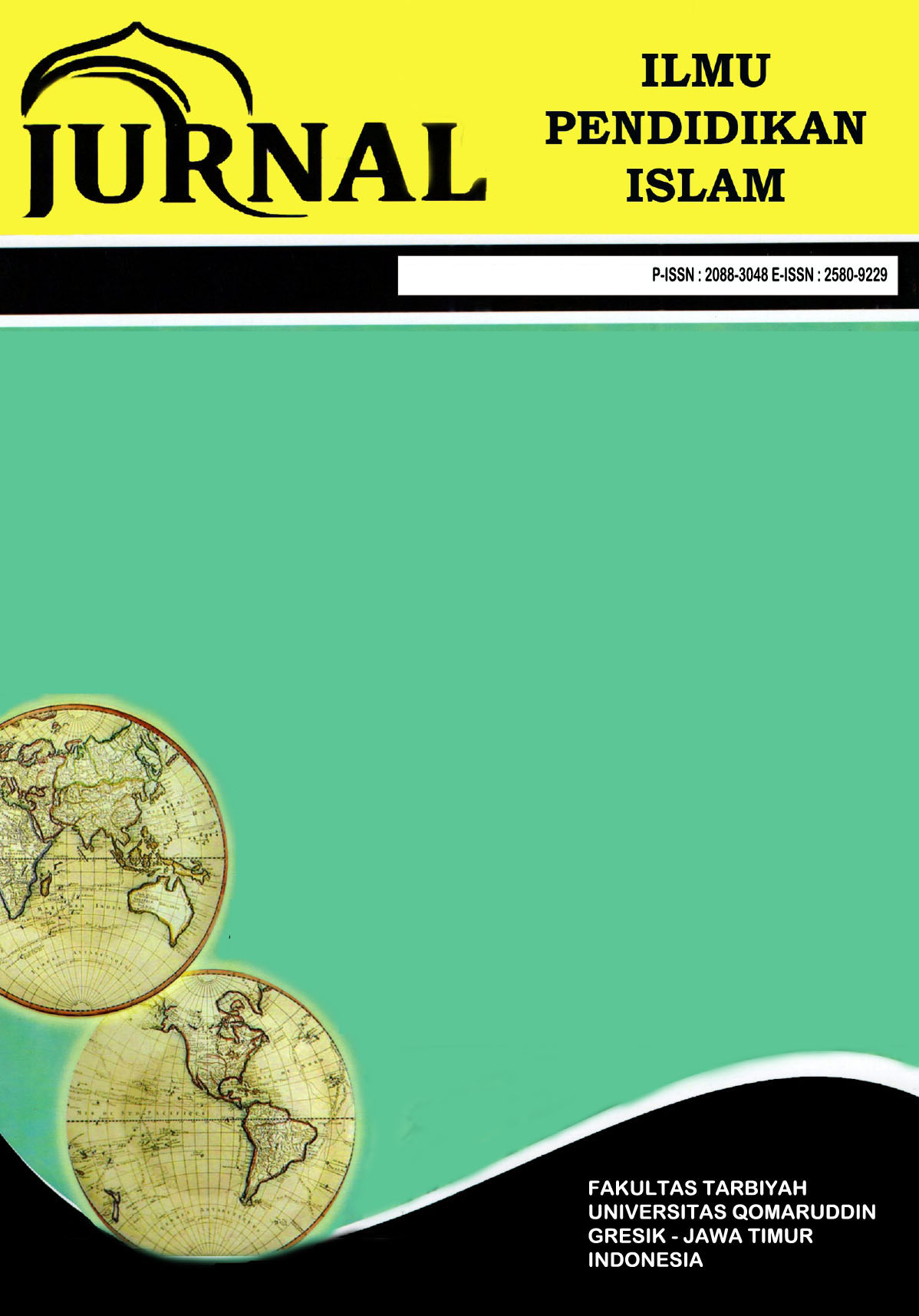PENGARUH METODE BERNYANYI TERHADAP MINAT BELAJAR SISWA PADA PEMBELAJARAN PENDIDIKAN AGAMA ISLAM KELAS V DI SDN TAMBUN 04 TAMBUN SELATAN
Abstract
This research consists of two variables, namely the singing method and students' interest in learning, so the aim of this research is to describe the picture of learning outcomes using the singing method, students' interest in learning, and the influence of both in a correlational relationship. The population in this research is class V students at SDN Tambun 04 Bekasi, and the sample is students in class V. The research method used in this research is ex post facto research with a quantitative approach, this method was chosen to identify relationships between singing methods and students' learning interests. Data related to experiences with the use of singing methods and students' interest in learning were collected using a questionnaire instrument, which was prepared using a Likert scale, data analysis techniques used descriptive and inferential analysis. The results of this research show that the use of singing methods is 12% in the low category, 61% in the medium category, and 12% in the high category, so it can be concluded that the average of the Class V Singing Method in Islamic Religious Education subjects at SDN Tambun 04 Bekasi is in the category currently. Student interest in learning is 13% in the low category, 61% in the medium category, and 11% in the high category, so it can be concluded that the average learning method for class V in Islamic Religious Education subjects at SDN Tambun 04 Bekasi is in the medium category. Based on the SPSS output in the Coefficients table, it is known that the significance value (sig.) is 0.000 < 0.05, so it can be concluded that H0 is rejected and Ha is accepted, which means that "There is an influence of the singing method (X) on students' interest in learning (Y)." From the results of the analysis, it is known that the value of R Square = 0.468, thus it can be concluded that the influence of the singing method (X) on the interest in learning (Y) of class V students in PAI subjects at SDN Tambun 04 Bekasi is 46.8%, while 53.2% of interest in learning is influenced by other variables that are not variables in this research.
References
Agama, K., & Karawang, K. (2012). Jurnal Manajemen Vol.10 No.1 Oktober 2012 1038. 10(1), 1038–1046.
Harys. (2020). Penelitian Kuantitatif. 34–46. https://www.jopglass.com/penelitian-kuantitatif/
Hasan, H. (2022). Pengembangan Sistem Informasi Dokumentasi Terpusat Pada STMIK Tidore Mandiri. Jurasik (Jurnal Sistem Informasi Dan Komputer), 2(1), 23–29. http://ejournal.stmik-tm.ac.id/index.php/jurasik/article/view/32
Kata Kunci : (2012). 4(2), 39–52.
Provinsi, P., & Barat, S. (2006). No Title. 1–13.
Sappaile, B. I., & Makassar, U. N. (2020). KONSEP PENELITIAN EX-POST FACTO. January.
Zaki Al Fuad, & Zuraini. (2016). Faktor-faktor Yang Mempengaruhi Minat Belajar Siswa Kelas 1 SDN Kute Padang. Jurnal Tunas Bangsa, 3(2), 54. https://ejournal.bbg.ac.id/tunasbangsa/article/view/625
Charli, L., Ariani, T., & Asmara, L. (2019). Hubungan Minat Belajar terhadap Prestasi Belajar Fisika. Science and Physics Education Journal (SPEJ), 2(2), 52–60. https://doi.org/10.31539/spej.v2i2.727
Handayani, S. (2016). Pengaruh Perhatian Orangtua dan Minat Belajar Matematika Terhadap Prestasi Belajar Matematika Siswa. Formatif: Jurnal Ilmiah Pendidikan MIPA, 6(2), 141–148. https://doi.org/10.30998/formatif.v6i2.948
Khoirun Nisa, I., Novita, R., & Walfajri. (2013). Penerapan Metode Bernyanyi dalam Meningkatkan Penguasaan Kosakata Bahasa Arab. Journal of Chemical Information and Modeling, 53(9), 1689–1699.
Pratiwi, N. K. (2017). Pengaruh Tingkat Pendidikan, Perhatian Orang Tua, Dan Minat Belajar Siswa Terhadap Prestasi Belajar Bahasa Indonesia Siswa Smk Kesehatan Di Kota Tangerang. Pujangga, 1(2), 31. https://doi.org/10.47313/pujangga.v1i2.320
Rianti, Hayani, S., Hidayati, I. N., Kurniati, R., & Mufidah, S. (2022). Implementasi Metode Bernyanyi dalam Mengembangkan Sosial Emosional Anak Usia Dini. Journal Ashil: Jurnal Pendidikan Anak Usia Dini, 2(2), 48–60. https://doi.org/10.33367/piaud.v2i2.2963
Ridwan, R., & Awaluddin, A. F. (2019). Penerapan Metode Bernyanyi Dalam Meningkatkan Penguasaan Mufradat Dalam Pembelajaran Bahasa Arab Di Raodhatul Athfal. DIDAKTIKA : Jurnal Kependidikan, 13(1), 56–67. https://doi.org/10.30863/didaktika.v13i1.252
Wahyuni, N., Oktariana, R., & Fitriani. (2021). Efektifitas Metode Bernyanyi terhadap Kemampuan Menyimak Anak Kelompok A di TK Bungong Seuluepok Banda Aceh. Jurnal Ilmiah Mahasiswa, 1(1).
Copyright (c) 2024 Muszalika Azahra, Lilis Karyawati, Nia Karnia

This work is licensed under a Creative Commons Attribution 4.0 International License.





